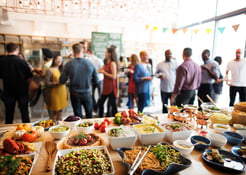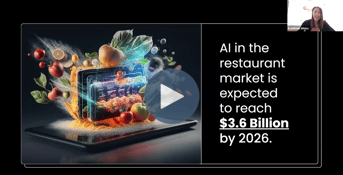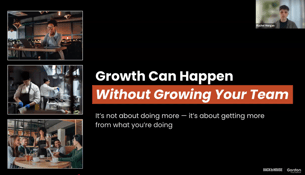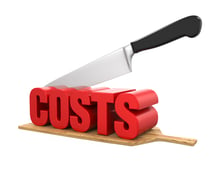Finding success in a competitive restaurant industry, where success means continually mixing dependability and comfort with innovation and surprise, is not for the faint of heart. While you should always strive to keep food waste at a minimum and maintain optimal staffing levels in order to stay profitable, standing apart from competing eateries sometimes requires creativity and a willingness to try new things.
New revenue streams can improve the customer experience and distinguish your restaurant as forward thinking. Some revenue streams require investments in new technology, but many others can help restaurateurs do more and reach more people with the staff, space, and other resources they already have.
4 Ways to Increase Restaurant Profitability with New Revenue Streams
Opportunities to open up alternate revenue streams and support the bottom line are everywhere. Take care, however, not to blindly experiment or simply chase the example of competitors. Do your research, get to really know your customers, and never sacrifice the quality you’re known for in the name of something new.
Customers will especially appreciate innovations that showcase an understanding of their needs and preferences. Make sure you spread the word too. Otherwise, customers may not even know what’s new.
1. Increase Restaurant Profitability with New Types of Food Service
Drawing additional revenue from your menu doesn’t have to mean raising prices or paring down choices. While either move could help improve margins, they both run the risk of alienating your regulars. Instead of charging more for the familiar or eliminating popular dishes to cut costs, look for ways to innovate with new service models. You’ll open up revenue streams without necessarily making large up-front investments and avoid upset customers.
Customers may already be looking for opportunities to patronize your restaurant in new ways. The last several years have seen an explosion in the appetite for take-out. Though pandemic lockdowns played a big role, the advent of mobile delivery applications was contributing to spikes in demand even before COVID-19 began making headlines. McKinsey reports that food delivery services were rising 8% annually prior to the pandemic. With no dine-in options available during lockdown, those numbers went through the roof and customers still love the convenience of ordering restaurant favorites with a tap of their touch screens. Not sure which order & delivery platforms will yield the highest returns? We’ve compiled a list of your best order & delivery options so you don’t have to.
Though demand for delivery and pick-up remains strong, there’s no denying its drawbacks. All that time in transit leaves plenty of opportunity for perfectly cooked meals to grow cold, soggy, and altogether disappointing. Meal kits offer a closer approximation of the restaurant experience to dine-out customers. You might pair dishes with specially selected wines, build themed meal kits, or put together kits full of festive food for holiday celebrations.
You can also find plenty of ways to get your food in front of new potential customers by just introducing yourself to neighboring business owners. If you share space with a retailer, try establishing a partnership and putting some of your food on their shelves. Local spots that sell food but don’t have their own kitchens might show interest too. Just don’t forget some branded packaging so shoppers know where they can find another of their new favorite sandwich, salad, or pastry.
2. Find Ways to Increase Restaurant Sales with Your Drink Menu
During the height of the pandemic, more than 30 states introduced laws allowing bars and restaurants to sell to-go cocktails. For customers, this presented a tasty change of pace from take-out six-packs. For operators, it often meant an opportunity to keep the lights on by opening a new revenue stream. Pre-made drinks and cocktail kits are still among the most popular ways to increase restaurant sales without making bold changes. Check out our guide to this new kind of mixology to ensure your drinks are optimized for both quality and portability.
Restaurants known for their extensive wine lists can showcase their sommeliers by building take-home kits around special bottles. Why stop there? A monthly wine club could draw additional revenue while building a passionate community around your restaurant and its products. Seasonal themes will help keep the drinking and conversation lively all year round.
What about customers who don’t drink? Reports suggest that the number of Americans who abstain from alcohol is up to around 40%. Just because these potential customers don’t imbibe doesn’t mean they’re not interested in indulging. A menu full of high-quality, zero-proof drinks gives them plenty of choices and gives you plenty of new potential revenue sources.
3. Generate Additional Revenue Through Special Events
Restaurants aren’t just for eating and drinking. They’re also the ideal place to socialize, listen to local bands, see favorite podcasters live, watch the season finale of a favorite show, or even learn something new. Making your location the staging ground for special events offers countless ways to increase restaurant sales. Talk to your staff about the type of events they’d most like to host or attend. Perhaps they’ve been dying to emcee a trivia night or open mic.
Maybe some of your regulars are harboring culinary ambitions of their own. Cooking or bartending classes are a great interactive way to engage these loyal customers. Though lockdowns are long gone, services like Zoom still have their uses. Consider opening up your cooking classes or happy hours to virtual attendees. Broadening the invite list will draw extra revenue while allowing customers who can’t visit your location in person to join in on the fun.
Don’t get discouraged if your inaugural events don’t draw big crowds. Keep at it. Make sure you’re consulting regulars and doing everything possible to spread the word both online around the neighborhood. Encourage attendees to share their experiences on social media and you’ll soon have lines out the door.
Alternatively, you can skip the hosting and clean-up duties by introducing a catering program for local businesses. Whether they’re looking to make an average Friday afternoon a little more special, send retirees off in style, or celebrate a holiday or special occasion, office managers will appreciate a near-by option for keeping employees fed. Those employees will thank you for making mandatory fun more palatable. Some could even become new customers! If you don’t mind hosting, on-site private events can increase restaurant profitability as well. Co-workers, friends, and families will all enjoy the opportunity to dine, drink, and socialize in their own dedicated space.
4. Boost Sales and Brand Awareness with Restaurant Merchandise
From t-shirts and crewnecks to pint glasses and koozies, restaurants and bars hawk all types of gear to loyal patrons. An in-store and online marketplace for branded goods gives these regulars a chance to show their support. It can even turn them into walking billboards for your business. Chat with your customers or conduct some competitor research to see which items will sell. Getting started is simple thanks to sites like VistaPrint and Canva that provide plenty of tools for creating branded merch. On the other hand, building a relationship with a local print shop or graphic designer could help you find the ideal price and introduce a revenue stream without breaking the bank.
Do customers ask about your homemade salad dressing or seasoning mix? Bottling and selling your own creations can increase restaurant profitability. That’s not to mention all the positive word of mouth it could bring. You might just find plenty of new fans if customers decide to give out your food as gifts or share it with friends at home.
Meal kits and packaged treats can help satisfy certain cravings, but some diners may be hungry for more opportunities to enjoy restaurant experiences in their own kitchens. Customers with a taste for at-home cooking might enjoy a book of recipes to help them craft beloved dishes on their own. As amateur chefs share their creations online, you’ll watch a whole new community emerge around your cuisine. With time, you may even find that new customers will make a trek to try out the real thing. Just don’t give all your kitchen’s secrets away!
Your online shop will surely attract last-minute shoppers come holiday season. That’s not to mention all those loyal diners with anniversaries, birthdays, and other events to celebrate. Don’t forget to make their lives easier by selling digital gift cards. You won’t need to spend a dime on printing physical cards and your customers can sleep easy knowing they’ve picked a gift that’s sure to wow.
Gift cards may have a reputation as an impersonal gift, but what could be more thoughtful than treating someone to a great meal at a favorite restaurant? It’s just one of many ways to increase restaurant sales and open new revenue streams by welcoming diners to create fond new memories. Whether they’ve stopped in for a meal or opted for the restaurant experience at home, make sure to engage with customers on social media. The more free advertising they offer, the easier you’ll find it to increase restaurant profitability through all types of revenue streams.
[Photo by Hybrid Storytellers on Unsplash]





